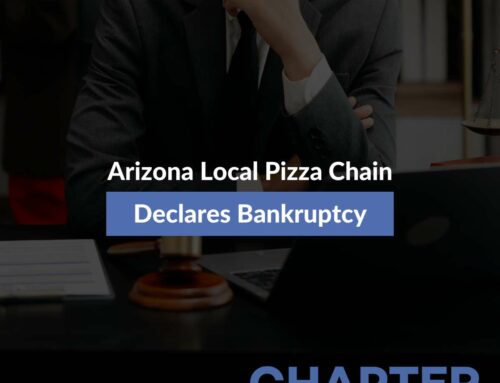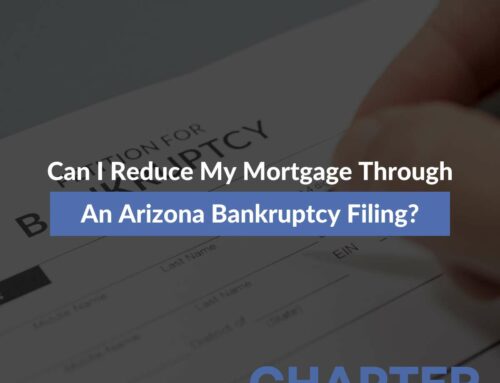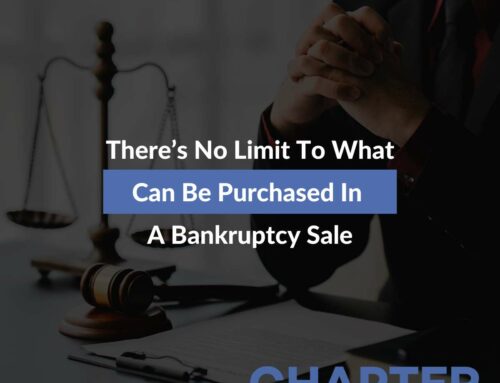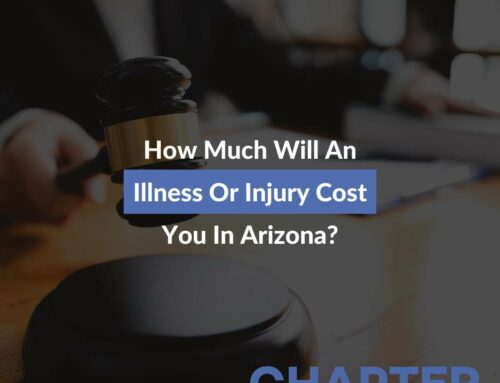How Bankruptcy Can Help You Manage Debt & Achieve a Fresh Start
Facing financial hardship can be stressful, but you’re not alone. If mounting debt feels impossible to manage, bankruptcy might be your best option to get the fresh start you need. At first, bankruptcy might not seem like a smart move, but understanding the process can help reduce stress and uncertainty, allowing you to determine if it’s the right choice.
This guide provides essential details about filing for bankruptcy in Arizona, helping you decide confidently before consulting an expert bankruptcy attorney in Arizona.
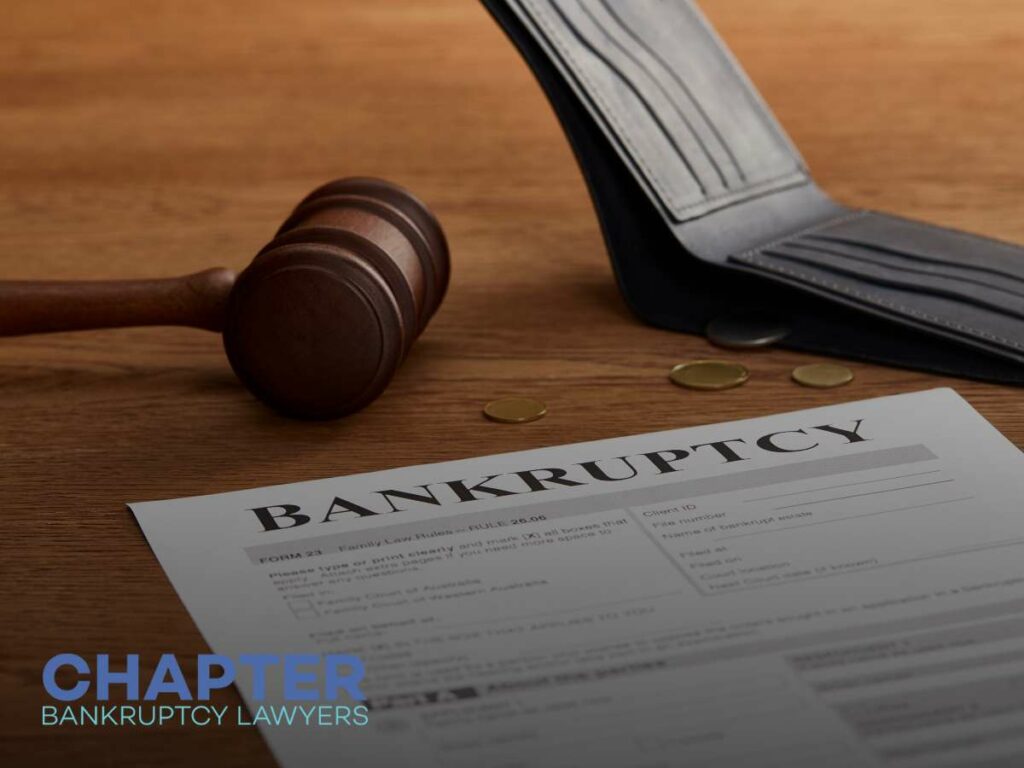
Chapter 7 vs. Chapter 13
Chapter 7 and Chapter 13 are the most common options when filing for bankruptcy. Each serves a different purpose, with distinct eligibility requirements, benefits, and drawbacks.
Chapter 7 Bankruptcy: Liquidation Bankruptcy
This option works better for people with limited income who cannot afford to repay their debts. Here’s how it works:
- It’s known as “liquidation bankruptcy” because it eliminates most unsecured debts, such as credit cards, medical bills, and personal loans.
- A court-appointed trustee may sell non-exempt assets to repay creditors. However, Arizona offers generous bankruptcy exemptions that allow filers to keep their home, cars, and other essential belongings.
- The process is relatively fast—typically 3 to 6 months from filing to discharge.
To qualify, you must pass the means test, which compares your income to Arizona’s median. If your income exceeds the limit, Chapter 13 may be a better alternative.
Chapter 7 provides key benefits, such as a fast debt discharge and no requirement for a repayment plan. However, it has a few drawbacks, such as requiring selling non-exempt assets (when necessary) and staying on the credit report for 10 years.
Chapter 13 Bankruptcy: Reorganization Bankruptcy
Chapter 13 is a good option for people with a steady income who want to keep their assets and repay debts over time. Here’s how it works:
- The “wage earner’s bankruptcy” allows filers to create a 3-to-5-year repayment plan to pay back some or all of the debts.
- Instead of liquidating assets, the filer makes structured payments based on income and expenses.
- Remaining unsecured debts may be discharged after completing the repayment plan.
To file for this type of bankruptcy, you must have a regular income to support the repayment plan, and your total unsecured debts must be below $465,275 and secured debts below $1,395,875 (as of 2024).
As for its benefits, Chapter 13 allows you to keep all your assets, including your home and car. It also stops foreclosures and repossessions, and the debt repayment plan is created based on affordability.
However, its drawbacks include taking between 3 to 5 years to complete and requiring strict budgeting and consistent payments.
If you’re unsure which option is best for you, consulting a bankruptcy attorney can provide clarity.
Requirements To File For Bankruptcy In Arizona
Filing for bankruptcy in Arizona involves meeting specific eligibility criteria and providing essential documentation. Here’s what you need:
1. Meeting eligibility requirements
As we mentioned before, depending on your situation, you might be eligible for Chapter 7 or Chapter 13. Remember that Chapter 7 requires passing the means test, which compares your income to Arizona’s median income, and Chapter 13 requires a regular income to make structured payments.
2. Completing credit counseling
Before filing, you must complete an approved credit counseling course within 180 days of submitting your bankruptcy petition..
3. Gathering required documents
You’ll need to provide:
- Proof of income (pay stubs, tax returns)
- A list of debts (credit cards, medical bills, loans)
- A list of assets (home, vehicles, personal property)
- Monthly expenses (rent, utilities, food, insurance)
- Bank statements
- Recent tax returns (usually for the past two years)
- Legal records (lawsuits, foreclosures, or wage garnishments)
4. Filing the bankruptcy petition
A bankruptcy attorney can assist in completing and submitting the required forms. Errors may delay or jeopardize your case.
5. Paying filing fees
- Chapter 7: $338
- Chapter 13: $313
Depending on your case, you may be eligible for fee waivers.
6. Completing a debtor education course
After filing, you must complete a financial management course before receiving a discharge.
The Bankruptcy Filing Process In Arizona
Pre-bankruptcy counseling
Before filing for bankruptcy, you must complete an approved counseling session. This one-on-one meeting helps assess your finances, explore alternatives, and create a budget.
Filing for bankruptcy
The most time-consuming part is preparing your bankruptcy petition. Your attorney will collect financial documents, including income, expenses, and debts, ensuring everything is accurate.
The automatic stay
After filing for bankruptcy, an automatic stay immediately halts creditor calls, letters, and collection efforts. If a creditor contacts you after the stay is issued, inform them of your bankruptcy and refer them to your attorney.
Meeting of creditors
You will attend a creditors’ meeting with your bankruptcy trustee and attorney a month or two after filing. Creditors rarely attend, but the trustee may ask questions about your case.
Debtor Education Course
Before finishing your case, you must complete a debtor education course covering budgeting and financial management. The course takes about two hours and is often available online.
Notice of Discharge
In Chapter 7 bankruptcy, debts are discharged after completing all requirements. In Chapter 13, the discharge occurs after completing a three- to five-year repayment plan.
Chapter 7 typically concludes within a few months, whereas Chapter 13 lasts longer due to the structured repayment plan before discharge.
The Impact Of Bankruptcy
Filing for bankruptcy significantly impacts your credit score, with the severity depending on the type of bankruptcy. The record remains on your credit report for 7 to 10 years, which is an important factor to consider when deciding to file.
Nevertheless, financial recovery is still possible after this disadvantage, especially if you want to rebuild your credit. For that, we recommend obtaining a secured credit card, making timely payments, and keeping debt levels low. You should also create a budget for emergencies to prevent financial obstacles.
It’s true that bankruptcy limits credit-building options initially, but many lenders offer trusted loans to anyone post-bankruptcy, so keep that in mind while going through this process.
Consequences Of Bankruptcy On Future Financial Opportunities
While bankruptcy provides debt relief, it can have long-term financial consequences, such as difficulty securing new loans. Lenders may be more hesitant to approve home or personal loans if you have a bankruptcy record. However, after a few years of responsible credit use, mortgage approvals become possible.
Additionally, some employers conduct credit checks, which may impact job opportunities in certain industries. It also affects your upcoming new credit, as you might get higher interest rates.
Lastly, some credit cards and loans may be unavailable immediately after filing bankruptcy.
Alternatives To bankruptcy
If bankruptcy seems unnecessary, there are other options to consider, including:
- Debt settlement: This involves negotiating with creditors to reduce the total amount owed.
- Debt consolidation: It combines multiple debts into one loan with a lower interest rate, which can make repayment more manageable.
- Credit counseling programs: Nonprofit agencies work with creditors to create structured repayment plans with lower interest rates.
- Negotiating with creditors: In some cases, creditors may be willing to extend payment terms or lower interest rates to help avoid bankruptcy.
Hiring a Bankruptcy Attorney In Arizona
If you’re struggling with overwhelming debt and need guidance on the best bankruptcy option for your situation, our experienced attorneys at Chapter Bankruptcy Lawyers are here to help. Contact us today for a free consultation and take the first step toward financial freedom.
CHAPTER BANKRUPTCY LAWYERS
Email: [email protected]
Website: www.chapterbankruptcylaw.com
Mesa Office
3707 E Southern Ave
Mesa, AZ 85206
Office: 480-405-1010
Tempe Office
4500 S Lakeshore Dr #300
Tempe, AZ 85282
Office: 480-562-6145



